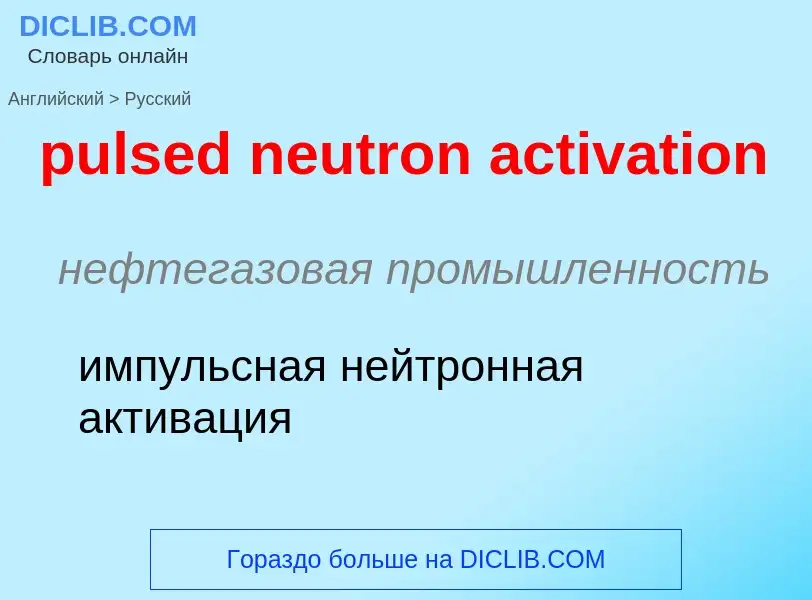Übersetzung und Analyse von Wörtern durch künstliche Intelligenz ChatGPT
Auf dieser Seite erhalten Sie eine detaillierte Analyse eines Wortes oder einer Phrase mithilfe der besten heute verfügbaren Technologie der künstlichen Intelligenz:
- wie das Wort verwendet wird
- Häufigkeit der Nutzung
- es wird häufiger in mündlicher oder schriftlicher Rede verwendet
- Wortübersetzungsoptionen
- Anwendungsbeispiele (mehrere Phrasen mit Übersetzung)
- Etymologie
pulsed neutron activation - Übersetzung nach russisch
нефтегазовая промышленность
импульсная нейтронная активация
[ækti'veiʃ(ə)nənælisis]
общая лексика
активационный анализ
физика
(нейтронно-)активизационный анализ
медицина
радиоактивационный анализ
общая лексика
дифракция нейтронов
Definition
describes something extremely impressive. Origin - since the neutron bomb is the most destructive bomb, describing something as neutron means that it is more impressive than something that is just the bomb.
I went to see the Ween concert last night. It was neutron!
Wikipedia
Neutron activation analysis (NAA) is the nuclear process used for determining the concentrations of elements in many materials. NAA allows discrete sampling of elements as it disregards the chemical form of a sample, and focuses solely on atomic nuclei. The method is based on neutron activation and thus requires a source of neutrons. The sample is bombarded with neutrons, causing its constituent elements to form radioactive isotopes. The radioactive emissions and radioactive decay paths for each element have long been studied and determined. Using this information, it is possible to study spectra of the emissions of the radioactive sample, and determine the concentrations of the various elements within it. A particular advantage of this technique is that it does not destroy the sample, and thus has been used for the analysis of works of art and historical artifacts. NAA can also be used to determine the activity of a radioactive sample.
If NAA is conducted directly on irradiated samples it is termed Instrumental Neutron Activation Analysis (INAA). In some cases, irradiated samples are subjected to chemical separation to remove interfering species or to concentrate the radioisotope of interest; this technique is known as Radiochemical Neutron Activation Analysis (RNAA).
NAA can perform non-destructive analyses on solids, liquids, suspensions, slurries, and gases with no or minimal preparation. Due to the penetrating nature of incident neutrons and resultant gamma rays, the technique provides a true bulk analysis. As different radioisotopes have different half-lives, counting can be delayed to allow interfering species to decay eliminating interference. Until the introduction of ICP-AES and PIXE, NAA was the standard analytical method for performing multi-element analyses with minimum detection limits in the sub-ppm range. Accuracy of NAA is in the region of 5%, and relative precision is often better than 0.1%. There are two noteworthy drawbacks to the use of NAA; even though the technique is essentially non-destructive, the irradiated sample will remain radioactive for many years after the initial analysis, requiring handling and disposal protocols for low-level to medium-level radioactive material; also, the number of suitable activation nuclear reactors is declining; with a lack of irradiation facilities, the technique has declined in popularity and become more expensive.



.jpg?width=200)
